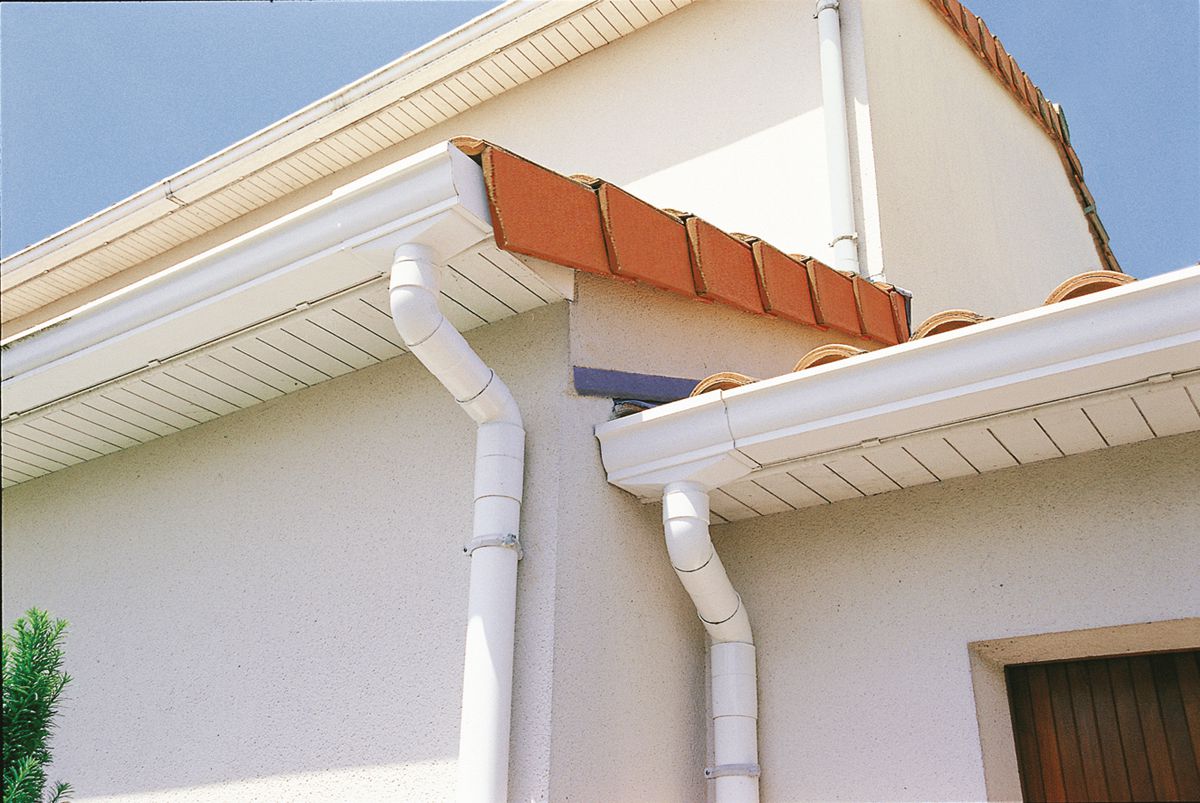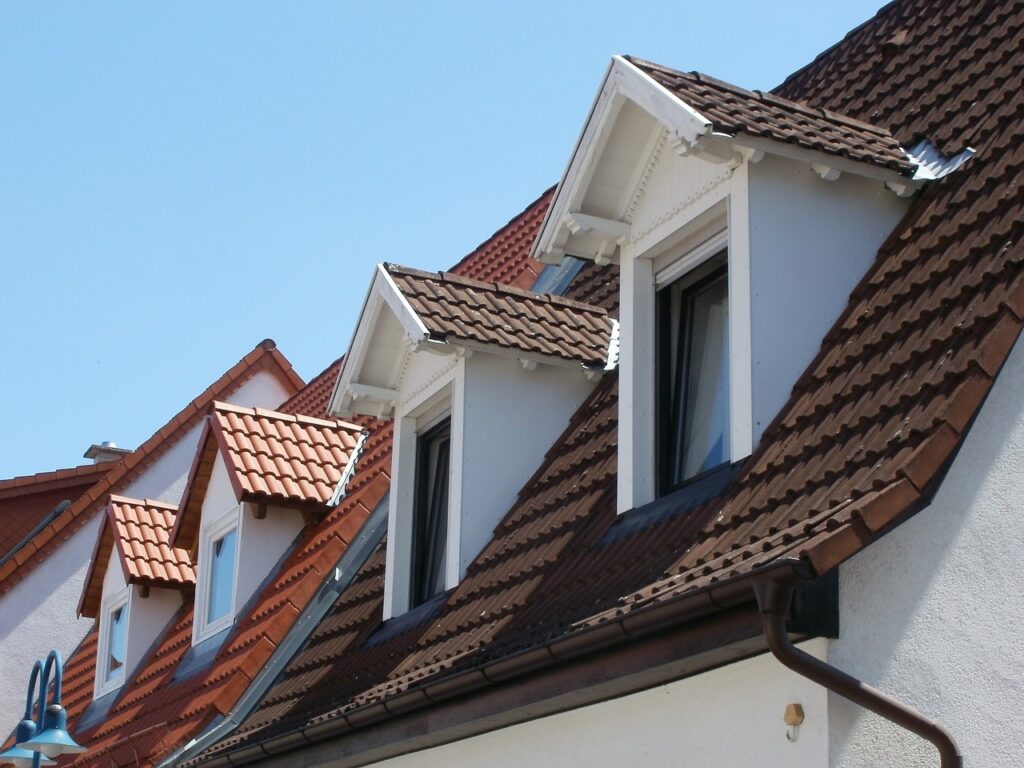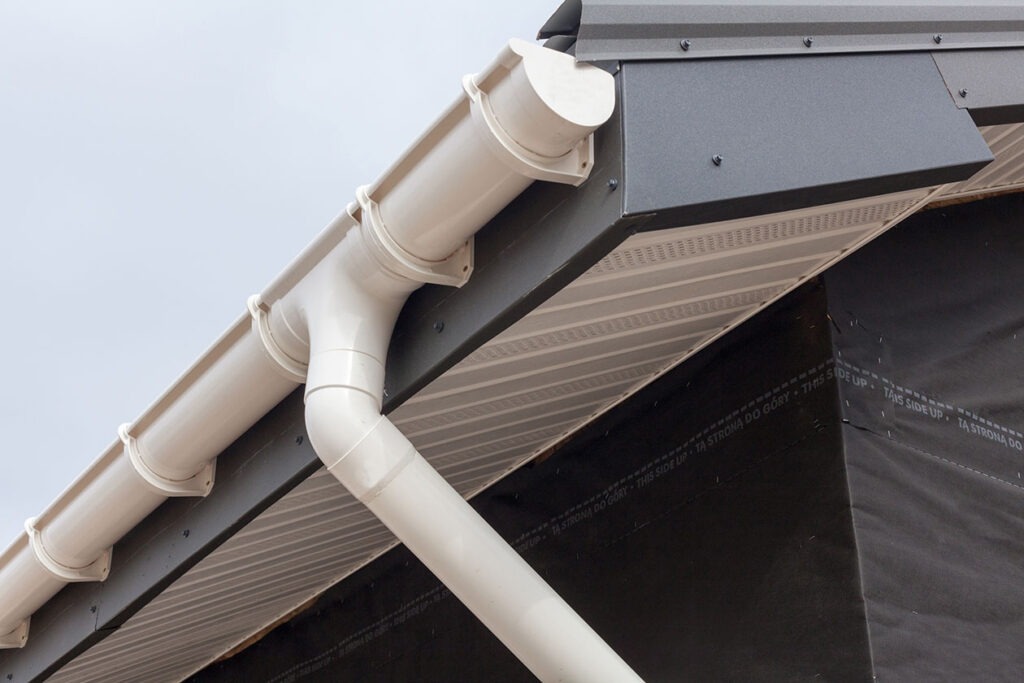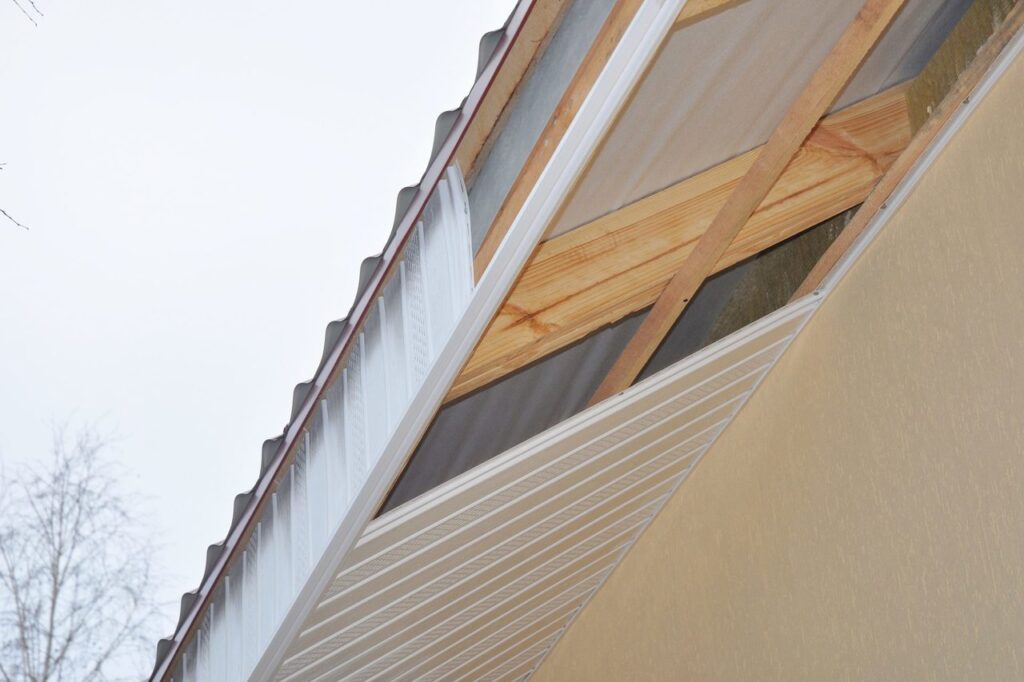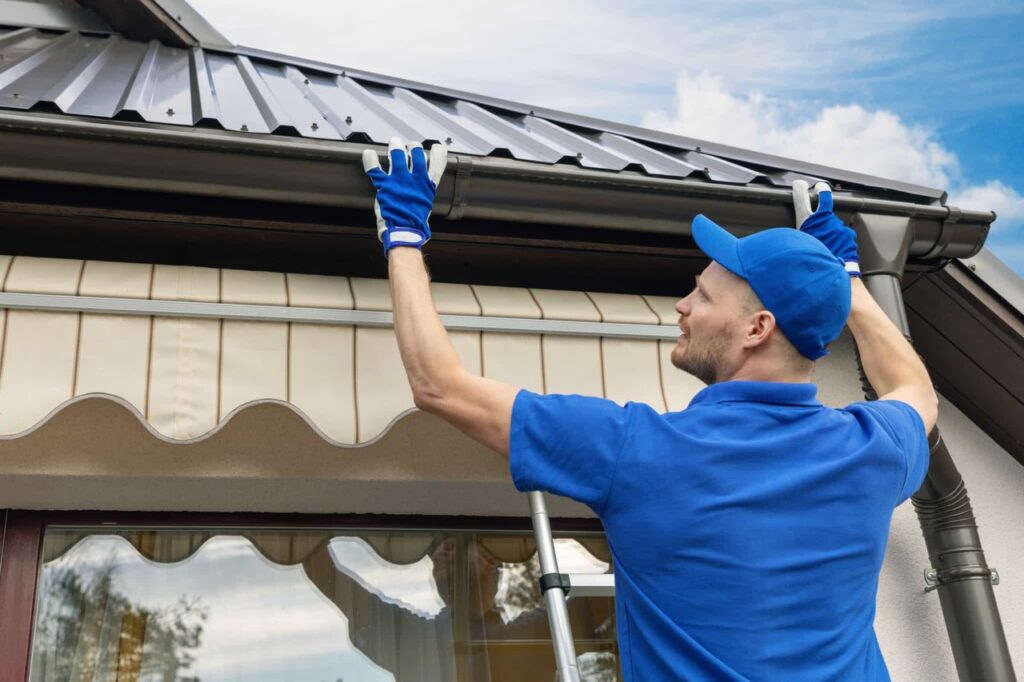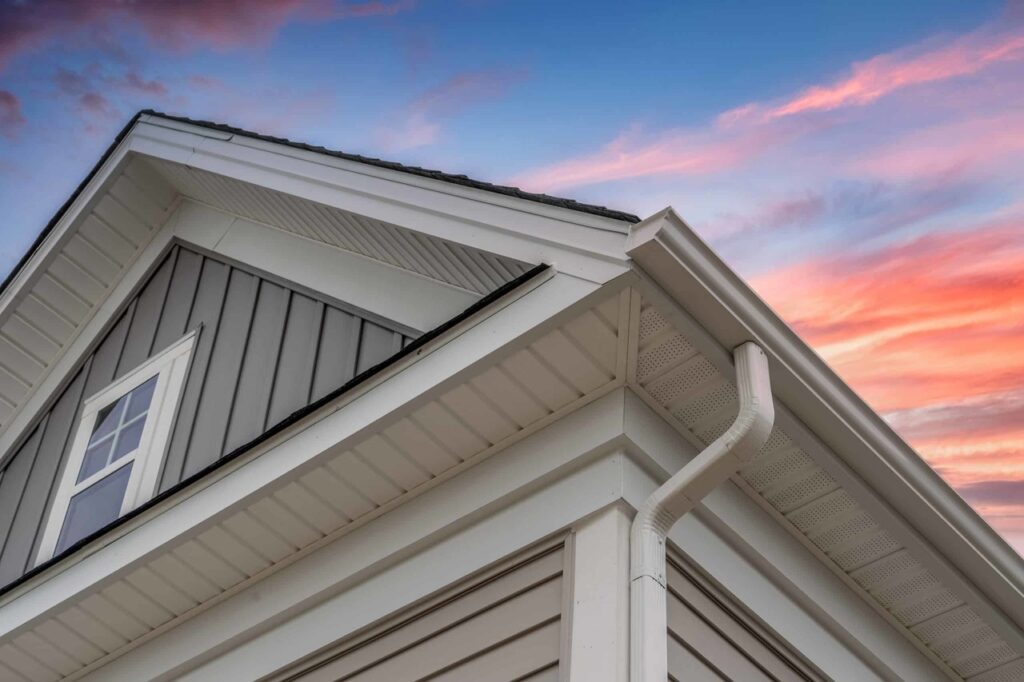The fascia board is a long plank of wood that is installed behind the gutters on a house. It fastens to close the attic, roofing rafters and holds the gutters in place. Blocked gutters, the infestation of an animal in an attic, or other roof issues can all lead to damage to the fascia board. The damage can be the beginning of other roofing issues, potentially causing damage to a house and an attic. So, if your fascia is damaged, you must have it changed.
What do you need to know about the roof fascia?
The fascia is a horizontal plank of wood that runs the length of the roof’s edge. The fascia is typically 2×6 or 2×8. The gutters are connected to the roof frame by this board. If you don’t find any wood here, it’s due to your fascia boards which are probably covered in an aluminium or vinyl cover that matches the system of your gutter. Houses with no fascia boards are uncommon. The absence of fascia boards is usually prohibited by construction codes and must be rectified to keep your house safe.
Fascia is used by roofers to provide stable support for gutters, and it also serves other essential purposes. There may be an opening in the roof without the fascia that leads directly to your loft. As a result, the fascia protects your loft from animals and weather. It also looks nice, especially when topped with a gutter-matching cap.
What items should you use for your new fascia board?
Typically, a fascia board is a thin and long piece of wood. Many different types of wood, from cedar to spruce, work well, as do composite wood. Composite woods are more resistant to moisture and water than solid wood products.
Suitable fascia boards, on the other hand, are available in a variety of plastics, including PVC and UPVC. These materials are even more resistant to variations in water and temperature. Because they are resistant to swelling and shrinking in response to temperature changes, they are highly improbable to deform or bend over time. The majority of these plastic planks can be coloured to match your vinyl or aluminium gutters and will appear to be wood coming from the ground.
What kind of wood is best for a fascia board?
The most important factors to consider when choosing materials for your fascia board are your specific roof, climate, and budget. Before making your decision, it is best to seek the advice of a roofer who is a professional that understands your requirements.
Fascia boards can be made from a variety of woods. Pine, Spruce, and fir are popular and reasonably priced options. Some roofers, on the other hand, prefer using cypress, cedar, or redwood for the fascia boards. Despite their higher cost, these kinds of woods are more resistant to moisture, though not sealed. To keep moisture out, if you use a different kind of wood for your fascia board, you may have to add a cap or trim or seal it. Painted and Sealed lumber may also require refinishing once in a few years, whereas PVC and cedar may need less upkeep.
What Exactly Is Fascia Trim?
Fascia trim is a thin sheet of material used to protect the outside of a board from the elements. It is also known as fascia cap, fascia cover, or fascia board flashing. Vinyl, aluminium, and copper are some of the materials used to make fascia trim. In general, you should select the material that best complements the system of your gutter.
When Should You Replace Your Roof Fascia?
The time to repair your fascia board entirely depends on you. If stains, bends, or chipping are affecting the appearance of your home, you should consider replacing your fascia board. When your fascia board is too damaged or weak to continue doing its job, you should listen to your roofer’s advice.
The following kinds of damage may necessitate fascia board replacement:
- Moisture harm: Moisture exposure could damage your fascia board if it hasn’t been sealed or trimless. Gutter clogs, roof leaks, and other roof issues can also expose the fascia to moisture regularly. Moisture can cause wood to rot and become unstable when exposed to it. A rotting fascia board can give way, causing gutter damage.
- Mould, algae and fungus: These three organisms can infect wet fascia boards. Furthermore, severe fungus and mould infections on the roof can spread into the fascia boards. Algae black spots have the same effect.
- Cracks: Temperature fluctuations, ageing, and water damage can all cause cracks in the fascia board. The cracked fascia board must be completely replaced in all cases.
- Damage from animals: When it comes to finding a haven in your attic, animals can indeed be tenacious. They have the potential to eat away at your fascia board or exacerbate the small spaces between it and the roof. Termites and other insects are also drawn to fascia boards.
- Bowing: A curved or bent fascia board may indicate structural problems with the house, so consult with your roofing crew.
- Holes: Water can enter your attic through holes in the fascia, including nail holes. Small holes can be sealed and filled, but larger holes may necessitate dashboard replacement.
Repairing part of your fascia rather than replacing the entire plank is sometimes possible. If only a few feet of the board has been exposed to water, your roofers may be able to cut it and reattach it securely if it spans two rafters, for example. If the board has two points of contact with the rafters, it should be capable of holding your gutters in place.
Even if a part appears to be salvageable, a fascia board that demonstrates signs of age, like creases and cracks, should be completely replaced because it could fail soon.
Is the replacement sufficient?
Based on what damaged your fascia board, a simple replacement may not be enough. If there is an underlying problem that caused the damage to the fascia, it is critical to ask your roofers to identify and repair it. Clogged gutters, for example, can overflow, exposing your fascia to moisture. The new fascia will be damaged quickly unless your roofer also repairs the gutters. Other issues you and your roofers may face include algae in sewers, roof fires, animal infestations, etc. Of course, if you have an animal infestation, you may need to hire pest control as well.
Are Roofers Replacing Fascia Boards?
Fascia boards should not be replaced by homeowners. The majority of homeowners are unprepared for the safety concerns that will arise as a result of this project. Furthermore, by interfering with the slope of the gutter, new, improperly installed fascia boards can obstruct the appropriate flow of water from the roof.
Although replacing fascia boards is a job for professional roofers, you may be curious as to how your roofers will complete the task.
Here’s how to replace a damaged fascia board correctly:
-
Step 1: Examine the Fascia that is currently in place
To determine the extent to which the fascia board needs to be replaced, a professional roofer will first inspect it. They’ll also take the size of the old card into account when choosing a replacement.
Your roofers will replace your fascia board as a total roof replacement by first installing new shingles and then treating them.
-
Step 2: Take out the drip the edge and gutters
Because the gutters are mounted on the fascia board, it is impossible to replace them without first stripping away the gutters. As a result, your roofers will strip away the gutters with care. The gutters can usually be reinstalled on the new fascia board if they are in good condition. It’s also possible that your roofers will be required to remove the drip edge. If this is the case, the drip edge can be used again if it is in an excellent state, unless your manufacturer’s restricted warranty is violated.
-
Step 3: Remove the old fascia board
Your roofers will carefully remove the nails from the dashboard and disassemble it with a hammer, pry bar, or other tool’s claw.
-
Step 4: Measure and Cut
Your roofers will then measure and cut the new fascia board to fit. They are capable of dividing the fascia into manageable pieces. If so, the piece should span at least 2 rafters and be nailed in place on both ends. To facilitate nailing, roofers can mark the location of the rafters on the board before placing them to ensure that the nails can be driven into the rafters.
Your roofers will also need to connect the edges of the fascia board. They formed a joint by cutting the board at 45-degree angles.
-
Step 5: Seal the Seams
Water should not be allowed to enter the joints between every piece of wood. Your roofers may use silicone caulk or another kind of sealant.
-
Step 6: Seal the Wood
The time has come to seal the wood itself. Any sealer of exterior wood will suffice, and your roofers can paint your gutters in a complementary colour.
There’s no need of painting the wood if you’re using fascia trim. The trim will hide the wood and make it unnoticeable. Instead of painting the trim, your roofers will install it by cutting, measuring, and nailing it to the fascia board.
Certain high-quality woods, like cedar, can be left unsealed under certain conditions.
-
Step 7: Attach Drip Edges and Gutters
Your roofers will reattach your gutters and tear them off now that the fascia is in place.


